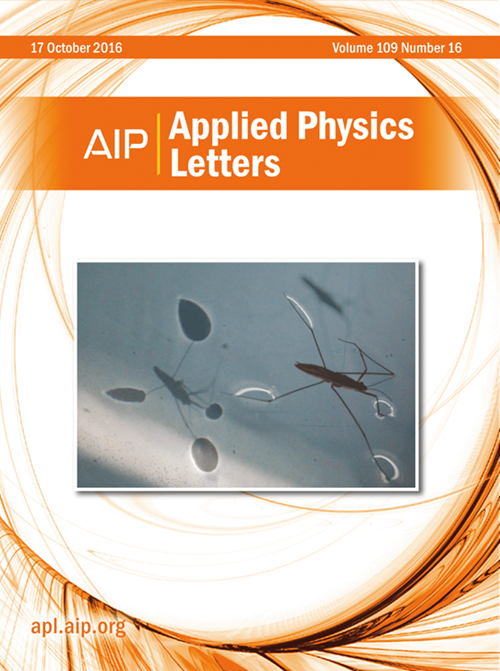Strong coupling between cavity and flopping-mode qubit beyond direct gate connection in a Si/SiGe triple quantum dot
IF 3.5
2区 物理与天体物理
Q2 PHYSICS, APPLIED
引用次数: 0
Abstract
Cavity coupled flopping-mode spin qubit is considered as a promising scheme for enabling long-range qubit interactions in large-scale semiconductor quantum computation. In this work, we fabricate a linear Si/SiGe triple quantum dot (TQD) array coupled with a high-impedance TiN coplanar waveguide cavity via the gate of outer quantum dot. By utilizing two adjacent dots within the TQD, we sequentially encode two flopping-mode qubits at different positions, whether with or without gate connection, which exhibit strong coupling to the cavity. Furthermore, we demonstrate the qubit manipulation with the help of dispersive readout, achieving Rabi oscillation frequencies of 16.9 and 13.7 MHz at zero detuning. These results expand the spatial range of qubit coupling and readout via the cavity, enhancing the operational efficiency of cavity-quantum dot array coupled system.求助全文
约1分钟内获得全文
求助全文
来源期刊

Applied Physics Letters
物理-物理:应用
CiteScore
6.40
自引率
10.00%
发文量
1821
审稿时长
1.6 months
期刊介绍:
Applied Physics Letters (APL) features concise, up-to-date reports on significant new findings in applied physics. Emphasizing rapid dissemination of key data and new physical insights, APL offers prompt publication of new experimental and theoretical papers reporting applications of physics phenomena to all branches of science, engineering, and modern technology.
In addition to regular articles, the journal also publishes invited Fast Track, Perspectives, and in-depth Editorials which report on cutting-edge areas in applied physics.
APL Perspectives are forward-looking invited letters which highlight recent developments or discoveries. Emphasis is placed on very recent developments, potentially disruptive technologies, open questions and possible solutions. They also include a mini-roadmap detailing where the community should direct efforts in order for the phenomena to be viable for application and the challenges associated with meeting that performance threshold. Perspectives are characterized by personal viewpoints and opinions of recognized experts in the field.
Fast Track articles are invited original research articles that report results that are particularly novel and important or provide a significant advancement in an emerging field. Because of the urgency and scientific importance of the work, the peer review process is accelerated. If, during the review process, it becomes apparent that the paper does not meet the Fast Track criterion, it is returned to a normal track.
 求助内容:
求助内容: 应助结果提醒方式:
应助结果提醒方式:


